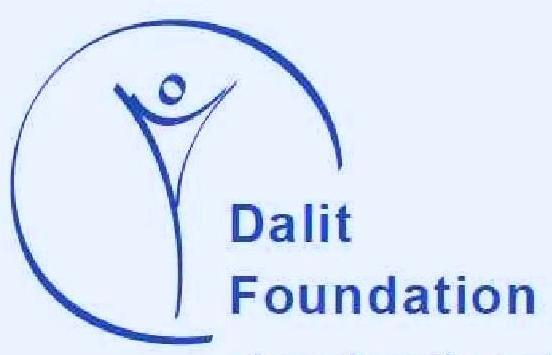The lay of the land
Denial of land rights, benefits of land reforms, to Dalits and tribals is the primary cause of social tension and violence in Gujarat.
Written by Martin Macwan
The problem of land ownership, as it is being framed after the self-immolation of Bhanubhai Vankar in February, covers less than even the tip of the iceberg. For the Gujarat government, it is politically convenient to describe this incident, and many others, of violence against Dalits as an “atrocity” rather than to recognise them as stemming from the alienation of Dalits from agricultural land.
Under the diktats of the Manusmriti, the Shudra had no right to property, which led to laws that prohibited Dalits from buying agricultural land in provinces like Punjab before the Land Ceiling Act — a reason for their backwardness despite constituting over 30 per cent of state’s population. Land ownership for the Dalits first came in the form of “community ownership” in the pre-Independence era, when they were granted “community land” in lieu of the hereditary services they offered to the village. The kings too gave such land to Dalits to remunerate their services to the court, such as feeding the state’s horses, providing firewood to officials in transit, holding revenue courts or carrying the revenue records. These lands were known as pasayta, vethiya, inami and in Maharashtra, they were known as vatan. B R Ambedkar opposed this system, which to him “enslaved” Dalits in perpetuity.
Dalits in village Dudkha, Sami block, Patan district, had maintained possession over one such tract of community land, though the state had refused to regularise their right over it. Under the long-standing state policy to regularise the possession of land, the Dalits in the district would become the legal owners of such land. Does the Gujarat government have any explanation for why it did not recognise Dalits as owners for so long that Bhanubhai was pushed to self-immolate?
After Independence, land reforms were the sole state programme to ensure economic equality, as land ownership remained only with the few. Since the Patidar were considered Shudras in the erstwhile Saurashtra state, they benefited the most from the land reforms. They bagged 3.75 million acres of land thanks to the political will of the state, laying the foundation for their emergence as a socially, economically and politically dominant class in Gujarat.
Although the Agricultural Land Ceiling Act declared Dalits and tribals as priority beneficiaries, they made negligible gains in terms of ownership. Under the Tenancy Act, which accorded the first right to purchase the land to the tiller, the Left government of Kerala ensured that tillers do not lose even an inch of land. In parts which went on to form Gujarat, state apathy ensured that Dalits and tribals lose their tenancy rights. Under both pieces of legislation, contrary to the stated ideal that Dalits and tribals would become owners of 3.75 million acres, less than one-third of the land went to the marginalised sections. In many cases, they are the legal owners of the land but do not have possession. The reason: Caste ruled the countryside more than the Constitution.
The Navsarjan Trust discovered that in 251 villages of Surendranagar district, Dalits were given “legal possession” of about 6,000 acres, but not actual possession. Some had filed lawsuits for their land but they have not secured justice even after four decades.
Marginal agricultural land ownership among Dalits is a key systemic reason for social and economic inequity in India until this day. Navsarjan, in its study, “Atrocities on Dalits in Gujarat”, which is based on in-depth research in 11 atrocity-sensitive-districts between 1989-1993 , found that the Dalits’ struggle to protect their meagre land ownership was the dominant reason for caste violence. The Golana massacre in Gujarat in 1986, when four Dalits were gunned down by Kshatriyas— two more died later due to the injuries — was rooted in the question of agricultural and housing land. Dalits with legal possession of the land tried to take actual possession.
After Independence, the Congress was instrumental in introducing revolutionary land reform legislation, although these were not implemented in the case of Dalits and tribals. Till a few years ago, land was an instrument of social and economic status. People preferred to marry into homes that owned agricultural land.
Before the BJP came to power in Gujarat, the land revenue code ensured that the land of the marginalised was protected by an institutional mechanism: The land obtained under land reforms or under the land reclamation programme was rendered “New Tenure” and could not be sold-mortgaged-leased without the prior sanction of the district collector. To ensure that agricultural land rests only with the tillers, there was a legal ban allowing farmers to buy agricultural land only within a radius of eight kilometres.
The BJP government, for the first time, removed this legal ban. This empowered rich farmers and their associates to dispossess small and medium farmers of their land by offering a little more money than the market price. The BJP made it easier for non-farmers to purchase agricultural land by relaxing norms to convert the agricultural land to non-agricultural under the garb of land reforms and promoting “development” through industrial investment.
The meagre land owned by Dalits, including their burial lands, is under attack in Gujarat. They have been prevented from benefiting from land reforms. What is worrying is that the social tension around the issue of land, a result of the state’s apathy, is increasing. While the government acts as a mute spectator, the tension is snowballing and is being framed as Dalits versus others. And the state hesitates less and less to brand activists working on such issues as “anti-national”.
The writer is a rights activist and founder of the Navsarjan Trust; he is also the Managing Trustee of Dalit Foundation.
***
The article was first published by The Indian EXPRESS, click here for the original article.



